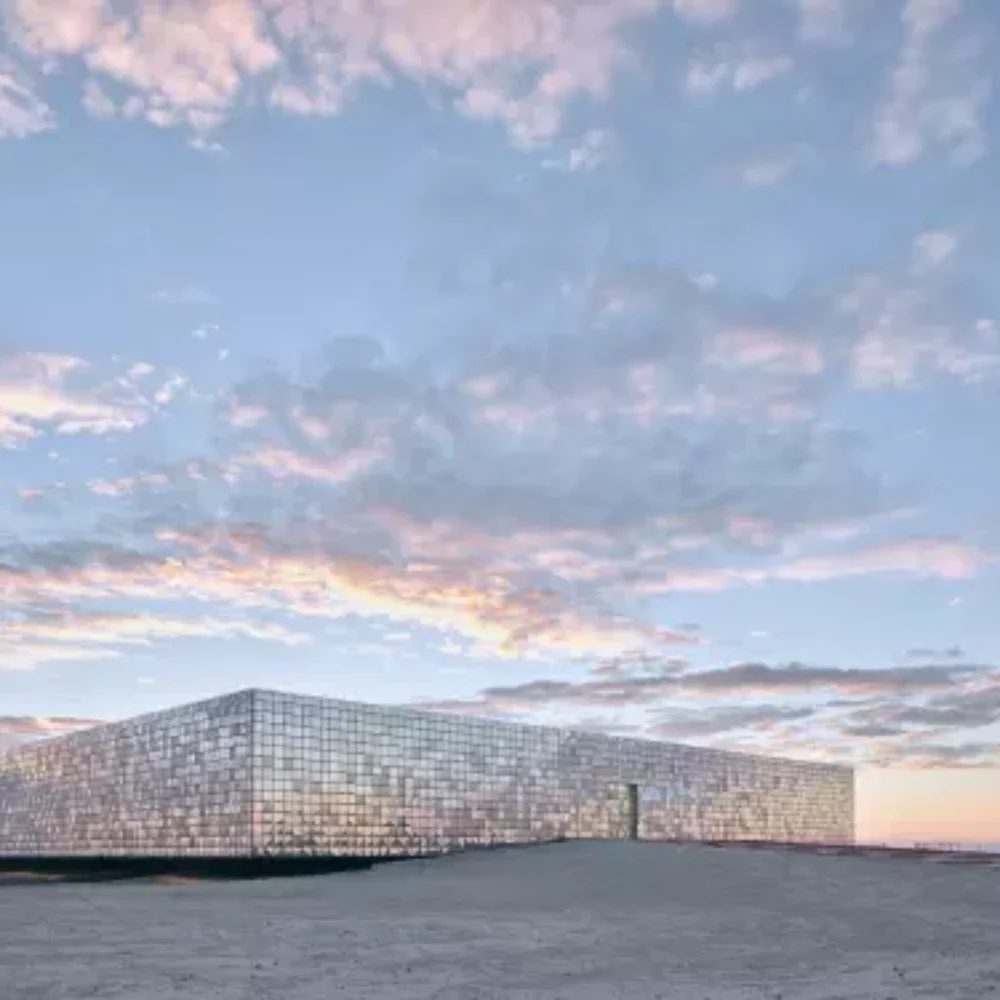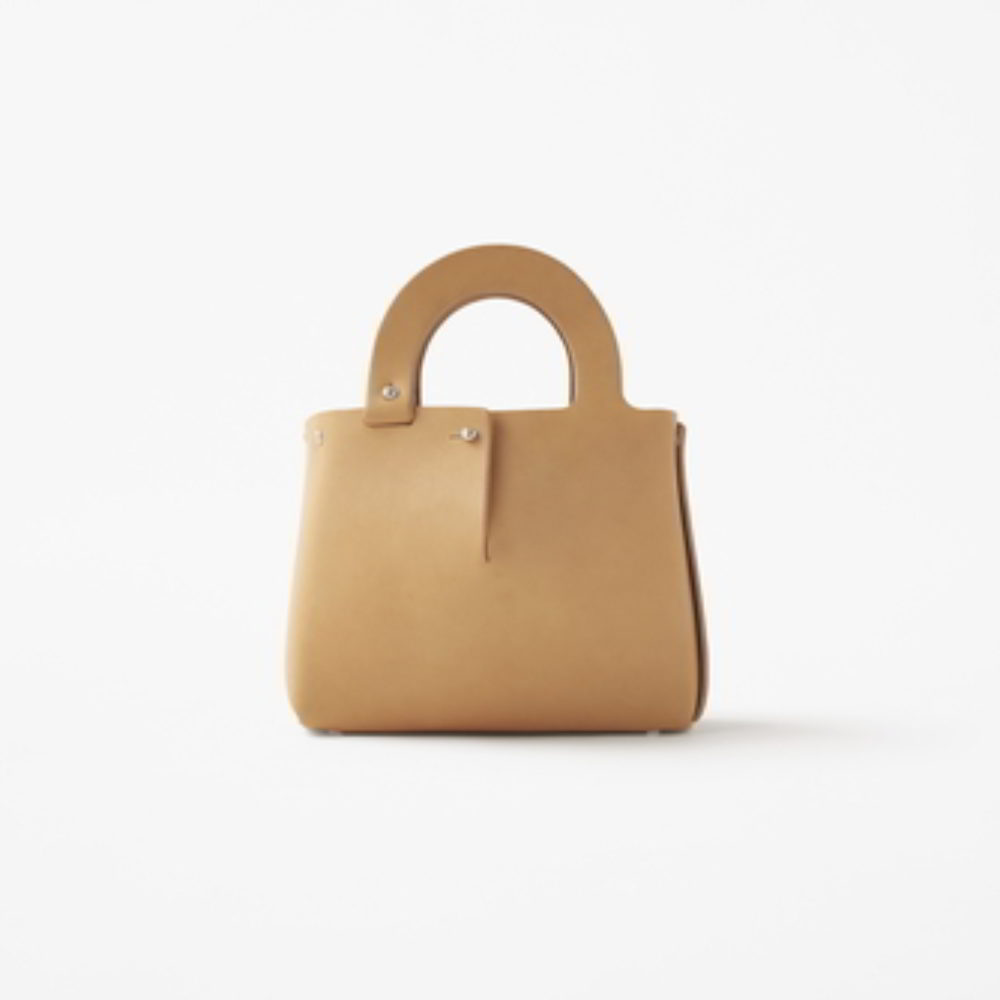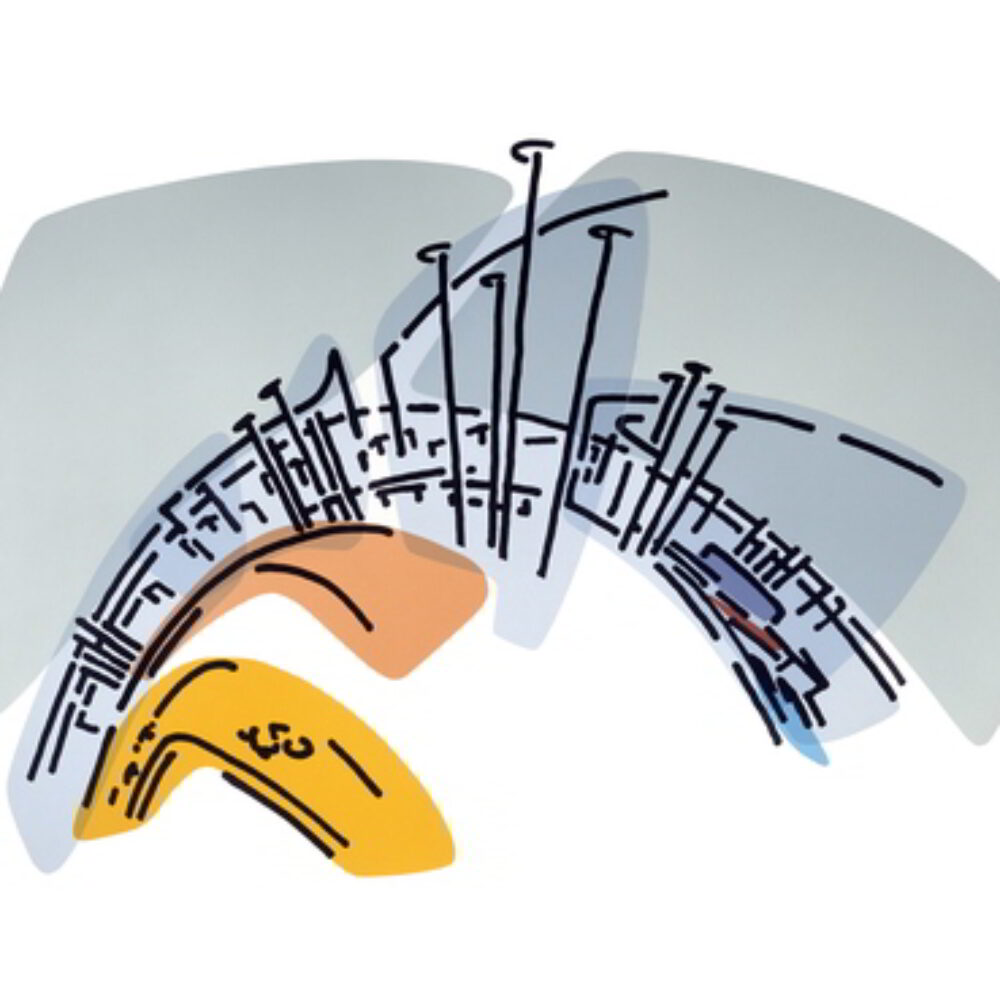How can we work with what is already there, asks Michael Hennings, creative head of Studio Offbeat. His sculptures and paintings for walls and buildings demonstrate how sustainably transformed structures, building materials and art can go hand in hand.
28. März 2025 | Michael Hennings
S
ince my beginnings as a graffiti artist, I have been fascinated by the transformation of urban spaces — their constant change, their expression of past and future. My architectural studies and work in renowned offices such as Meixner Schlüter Wendt Architekten in Frankfurt am Main and Blauraum Architekten in Hamburg have sharpened my eye for design and the complex challenges of architecture. In these offices, I was able to experience how well-thought-out concepts characterise spaces and how architecture has an impact that goes far beyond the functional. At the same time, I realised that the construction sector in its current form is often dominated by economic constraints — which usually leads to functioning buildings being demolished, valuable resources being wasted, and social structures being displaced. This realisation has changed my artistic focus: With my work, I want to explore the possibilities of rethinking sustainable architecture not only technically but also culturally and aesthetically.
Today, I use art as a medium to visualise these dynamics, highlight alternatives and drive forward the discourse on the topic of building transition. It’s not just about building in a less harmful way, but about appreciating existing structures, closing cycles and understanding architecture as a social responsibility.
With Studio Offbeat, I develop artistic strategies to reflect on pressing building issues, point out deficiencies and open up new perspectives. For me, art is a means of communicating issues such as building conservation, circularity and social justice in a vivid and accessible way.
MY VISION OF AN ECOLOGICAL, SOCIAL AND ECONOMIC BUILDING TRANSITION
Making architecture sustainable requires more than technical solutions. It requires a cultural shift — a new appreciation of our existing buildings, a change in our aesthetic and functional expectations of urban space, and greater social participation in building processes.
With my art, I question established norms and put new approaches up for discussion. How can we work with what we already have? What alternative materials and construction methods are available? How can we design buildings and urban spaces in a way that is socially equitable?
I focus on an interdisciplinary approach that combines art and architecture. Studio Offbeat comprises large-scale murals, sculptural wall objects and sculptural works made from construction waste, as well as digital interventions that present visions for a sustainable city.
THE AESTHETICS AND ARTISTIC INSPIRATION OF STUDIO OFFBEAT
My artistic style evolves from the architecture itself. Geometric abstraction, precise line work and reduced colour palettes are central elements. Inspired by early graffiti experiences, the aesthetics of Brutalist buildings and the radical clarity of Modernism, I seek a formal language that reveals the character of materials and their history. Studio Offbeat deliberately favours an aesthetic that does not smooth or hide, but rather transforms what already exists.
MATERIALS WITH A HISTORY AND A FUTURE
My sculptural wall objects are made from reused building materials such as linoleum flooring, wooden panels or façade elements and are assembled in a recyclable, i.e. mechanically soluble, way. Following the principle of Urban Mining, I remove materials from waste and feed them into a new cycle. Some works relate directly to specific buildings by integrating their colours or materials.

PRESERVATION — MURALS AS REMINDERS AND WARNINGS
A recurring theme in my work is the value of existing buildings. Especially in growing cities, more and more buildings are being replaced by new ones, even though they could still be used. One of the ways I document this loss is by painting murals on demolished buildings – an approach that is reflected in several projects.
At the Bauwende Festival 2022 [Building Transition Festival 2022] in Berlin, I presented a series of photographs of murals created on buildings that had been demolished by the time of the exhibition. The images showed the transience of urban space and how quickly valuable architecture can disappear.
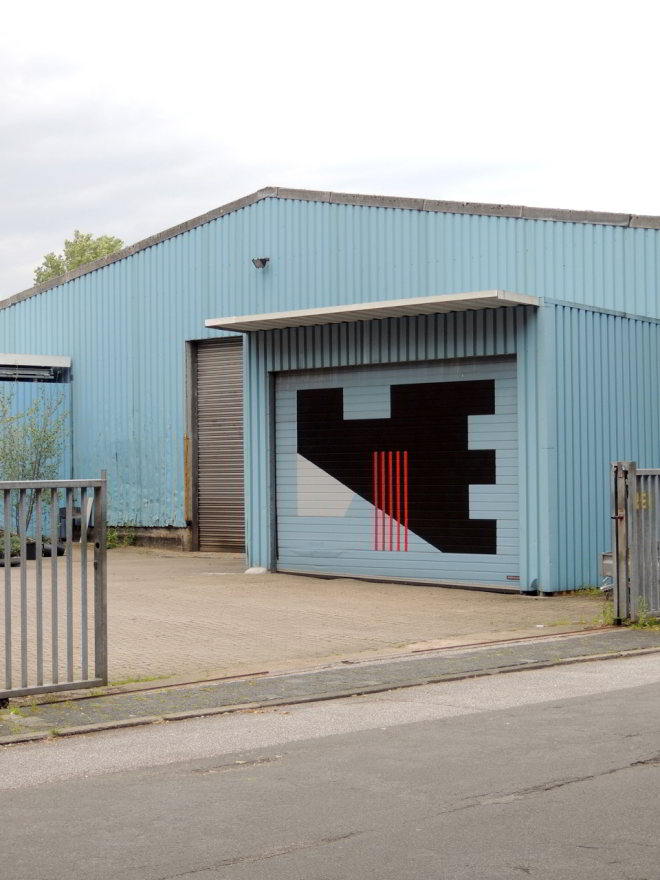
At the end of 2024, I was able to make a contribution to the curated wall space The WALL + in the Gängeviertel district of Hamburg with Studio Offbeat. My mural developed directly from the visible architecture of the site and was closely linked to the use and social relevance of the Gängeviertel. The project demonstrated that art is not just a decorative accessory but can actively interact with the built environment.
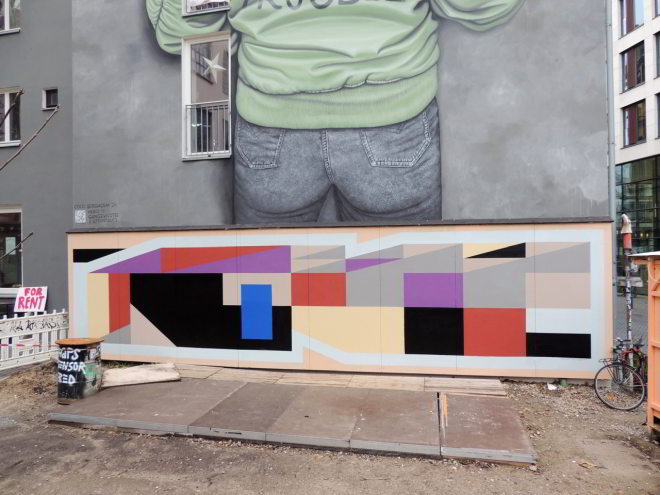
DIGITAL VISIONS — ART AS A MEDIATOR OF SUSTAINABLE CONSTRUCTION METHODS
Art has the ability to make abstract concepts visible. This became particularly clear in the exhibition ‘Baut keinen Scheiß’ (Don’t build shit) during the Hamburger Architektur Sommer 2023 (Hamburg Architecture Summer 2023). In collaboration with the Hamburg local group of the Architects for Future, I developed an artistic interface between the ten demands of the Architects for Future on sustainable building and specific Hamburg construction projects.
At the heart of my contribution were digital photomontages showing Hamburg’s building projects in new, sustainable contexts. These works were based on a formal language derived directly from the architecture of the buildings. Each photomontage dealt with the structural conditions of the site and translated them into a colour scheme that reflected the relevant requirements of Architects for Future.
One striking example was the digital processing of the Elbtower. The entry questioned whether Hamburg really needed more space for offices, hotels and restaurants, while at the same time, more than half a million square metres of office space stand empty. The drastic digital transformation of the building showed how architecture can be rethought in terms of sustainable principles, even before a project is stopped.
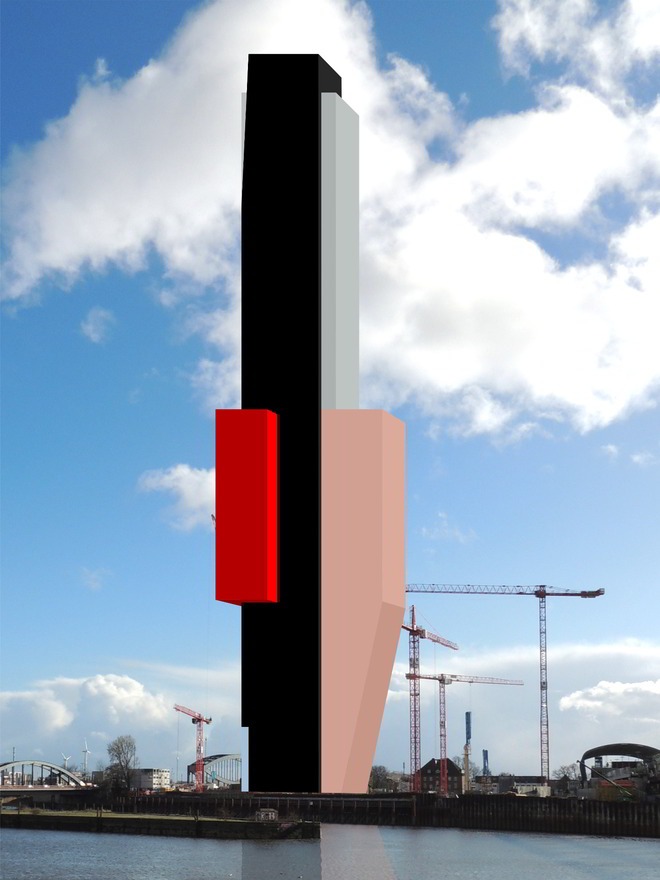
The exhibition was not solely a visual experience but also a participatory one: Visitors could actively engage with the theme and contribute their thoughts. The aim was to make sustainable building concepts accessible to a broader audience and to encourage dialogue between architecture and civil society. The digital approach served not only as an artistic stylistic device; it also highlighted the potential of digital tools to scrutinise urban development and highlight new perspectives.
EXHIBITIONS À LA STUDIO OFFBEAT
In addition to individual art projects, my exhibitions are essential spaces for reflection and exchange. The pop-up exhibition ‚BUILT ENVIRONMENT‘ (March 2024, PATIO project space, Kiel) focused on transforming urban spaces and the need for sustainable architecture. A central element of the exhibition was a mural based on the building structure of the exhibition space — a building that formerly served as a carpentry workshop, then a furniture warehouse, and is now a studio and exhibition space. The geometric-abstract design of the mural took the roof pitch as its central motif and continued in precise interplay with the skylights. This combination of painting and architecture created a visual tension. It not only complemented the existing structure but reinterpreted it. The work showed how architectural flexibility can add value to existing buildings and enable more sustainable use by consciously integrating the existing architecture into the artistic design.

Another crucial element of the exhibition was the participatory approach to sustainability. Visitors could share their thoughts on environmentally and socially responsible building methods. The diversity of perspectives was impressive, as reflected in the many responses to four key questions on climate and socially responsible construction. It became clear that sustainable construction is relevant far beyond specialist circles. The answers covered environmental, social and economic aspects — from the desire for more green spaces and local use of materials to the demand for affordable housing and creative open spaces. The exhibition proved that there is a broad social interest in sustainable architecture and that many people are willing to actively participate in the discourse.
I also picked up on this theme in the solo exhibition ‘Realise Utopia — Artistic Abstraction of Sustainable Building’ (October 2023, Qvartr Gallery, Hamburg). Combining sculptural wall objects made from re-used materials, large-scale murals and digital works, it explored the boundaries between sustainable building aesthetics and architectural function.
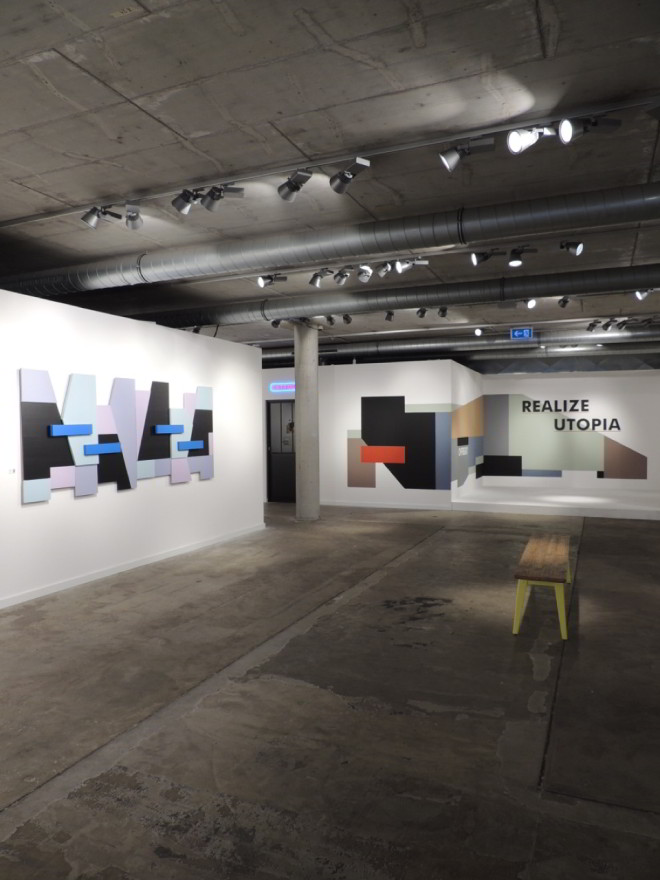
At the finissage of the ‚Realise Utopia‘ exhibition, a reading by the Aesthetics Working Group of the BDA Hamburg opened up another dimension to the debate on the future of architecture. Under the title ‚A Planning Day in the Future‘, the architects Axel Farnschläder (Thüs Farnschläder Architekten), Lutz-Matthias Keßling (BLK2 Architekten) and Jannes Wurps (blrm Architekten) presented a fictional setting in which the complexities of the climate crisis, the transformation of Hamburg’s urban landscape and the aesthetic dilemmas of climate architecture come together. The reading provided architectural scenarios for the future and a critical reflection on what kind of design narratives are needed to bring about the building transition.
It was particularly important to me that this exhibition appealed not only to architects but also sensitised a wider audience to the topic. The dialogue that ensued encouraged me to continue pursuing this interdisciplinary approach.
STUDIO OFFBEAT: A CALL FOR COLLECTIVE ACTION
The future of architecture is about more than new technologies or construction methods. It has to do with a new way of considering how to design, use and value our environment.
With Studio Offbeat, I intend to drive this discourse forward by questioning and looking at things from alternative perspectives. Studio Offbeat wants to encourage people to engage with the built environment. It is not enough to construct in a less harmful way; we must create a genuine added value for society and the environment.
I invite anyone interested in this topic to join me on this journey — whether through collaboration, exchange or simply through a new awareness of the spaces that surround us.♦
MICHAEL HENNINGS
Michael Hennings is the creative mind behind Studio Offbeat, a platform that combines art and architecture to promote sustainable and innovative approaches in the construction industry. More information on the project can be found at www.studio-offbeat.com.





